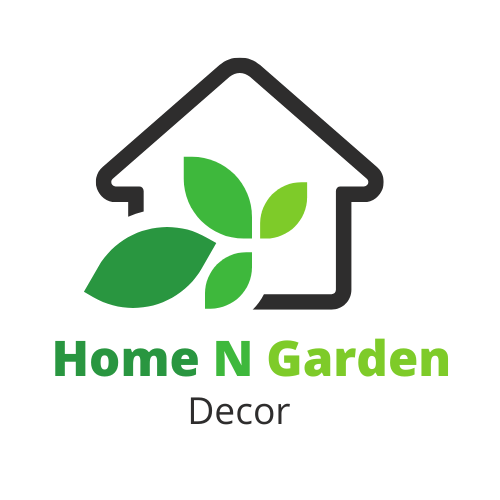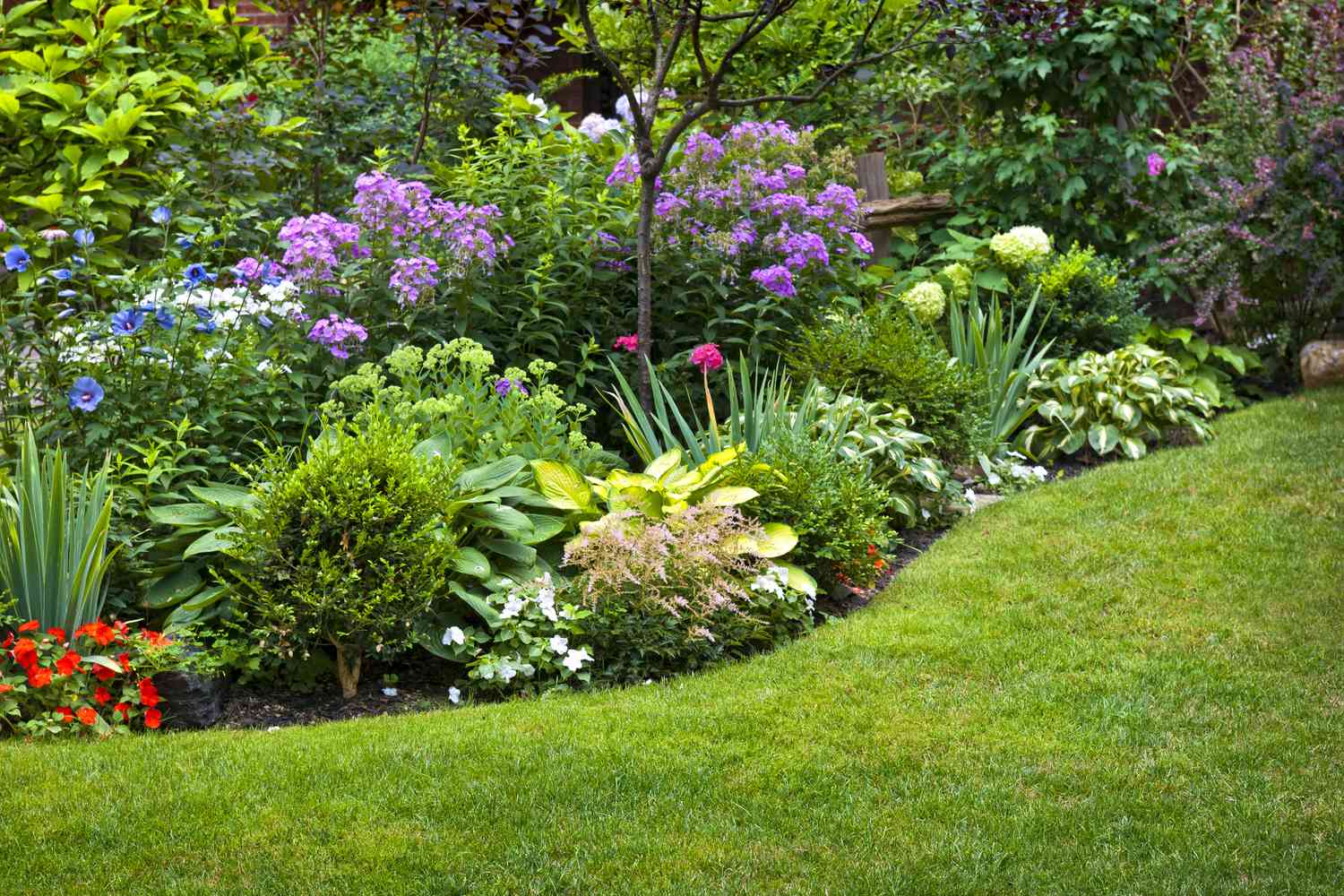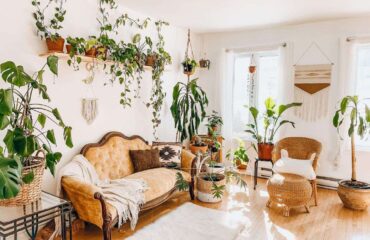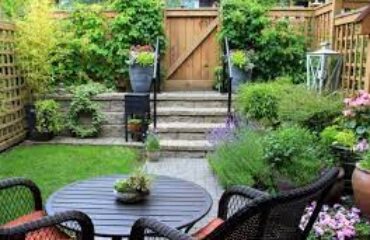The Ultimate Guide to Harmonizing Home and Garden Design
Creating a seamless flow between your home and garden can greatly enhance the overall aesthetic of your property. From choosing complementary colors to incorporating outdoor elements into your interior design, there are countless ways to harmonize these two spaces. In this ultimate guide, we will explore tips and tricks for achieving a cohesive look that ties your home and garden together beautifully.
One of the key aspects of harmonizing home and garden design is to consider the overall color scheme. By selecting a palette that works well both indoors and outdoors, you can create a sense of unity between the two spaces. For example, if your home features neutral tones like whites and grays, consider carrying these colors into your garden through planters, furniture, or accessories. This will help create a seamless transition between the interior and exterior of your property.
In addition to color coordination, incorporating natural elements into your home decor can further enhance the connection between your indoor and outdoor spaces. Consider bringing in potted plants, botanical prints, or natural textures like wood and stone to blur the lines between inside and outside. This not only adds visual interest but also creates a sense of harmony that ties your home and garden together.
Another way to harmonize home and garden design is to pay attention to the style of both spaces. If you have a modern home with clean lines and minimalistic decor, consider carrying this aesthetic into your garden with sleek furniture, geometric planters, and contemporary landscaping features. On the other hand, if your home has a more traditional feel with ornate furnishings and classic details, opt for lush gardens with romantic blooms and vintage-inspired accents.
When it comes to furniture placement, think about how you can create an easy flow between indoor and outdoor living areas. Consider placing seating arrangements near large windows or glass doors that open up onto the garden so that you can enjoy views of nature from inside your home. Additionally, investing in versatile pieces like weather-resistant outdoor furniture that can be easily moved indoors during inclement weather will ensure a smooth transition between the two spaces.
Lastly, don’t forget about lighting when harmonizing home and garden design. Strategically placed outdoor lighting fixtures can highlight architectural features of your home while creating a welcoming ambiance in the garden at night. Similarly, incorporating indoor lighting elements like floor lamps or sconces near windows overlooking the garden can help blur boundaries between inside and outside even after dark.
The Ultimate Guide to Harmonizing Home and Garden Design
Creating a seamless flow between your home and garden involves thoughtful planning and design to ensure both spaces complement each other aesthetically and functionally. Here’s how to achieve this harmony:
Planning and Design
1. Holistic Approach
– Unified Vision: Plan your home and garden as a cohesive project, ensuring design elements and themes are consistent throughout.
– Style Continuity: Select a design style that suits both your indoor and outdoor spaces, whether it’s modern, rustic, minimalist, or traditional.
2. Functional Zoning
– Define Zones: Clearly define areas for different activities both indoors and outdoors, such as lounging, dining, cooking, and gardening.
– Smooth Transitions: Use design elements like patios, decks, and verandas to create smooth transitions between zones.
Interior Design
1. Color Scheme
– Coordinated Palette: Use a coordinated color palette that extends from your indoor spaces to your outdoor areas. Earth tones and natural hues work well for blending spaces.
– Accent Colors: Introduce accent colors through cushions, rugs, and decorative items that can be used both indoors and outdoors.
2. Materials and Textures
– Natural Materials: Incorporate natural materials like wood, stone, and bamboo indoors to create a cohesive look with your outdoor spaces.
– Texture Variety: Use a variety of textures to add depth and interest, such as wicker furniture, woven rugs, and linen textiles.
3. Furniture
– Versatile Pieces: Choose furniture that can be used both indoors and outdoors, like weather-resistant sofas and tables.
– Matching Styles: Ensure that the style of your indoor furniture matches or complements your outdoor furniture.
4. Lighting
– Consistent Lighting: Use similar lighting fixtures and styles in both areas to create a seamless look. Consider using string lights, lanterns, and solar-powered lights outdoors.
– Natural Light: Maximize natural light indoors with large windows and glass doors that open to outdoor spaces.
Outdoor Design
1. Garden Layout
– Symmetry and Balance: Design your garden layout to reflect the symmetry and balance of your indoor spaces. Use pathways and plantings to create structured areas.
– Visual Flow: Ensure there’s a visual flow from your indoor areas to your garden. Use elements like arches, trellises, and garden gates to draw the eye.
2. Outdoor Living Areas
– Seating and Dining: Create comfortable seating and dining areas outdoors that mirror your indoor spaces. Use outdoor rugs and cushions to add coziness.
– Outdoor Kitchen: If space allows, set up an outdoor kitchen or barbecue area that complements your indoor kitchen’s design.
3. Water Features
– Cohesive Elements: Incorporate water features like ponds, fountains, or waterfalls that reflect the style and serenity of your indoor spaces.
– Sound and Motion: Use water features to add the soothing sounds of flowing water, enhancing the overall ambiance.
Integration Techniques
1. Open Plan Living
– Large Openings: Use large sliding or bi-fold doors to create an open plan that seamlessly connects your indoor and outdoor areas.
– Level Flooring: Ensure the flooring between indoor and outdoor spaces is level to create a continuous flow. Use similar materials or complementary designs.
2. Greenery Indoors and Out
– Indoor Plants: Incorporate plenty of indoor plants to create a connection with your outdoor garden.
– Vertical Gardens: Use vertical gardens or living walls both indoors and outdoors to add greenery and enhance visual continuity.
3. Decor and Accessories
– Coordinated Decor: Use similar decor items like throw pillows, blankets, and art pieces in both areas to create a cohesive look.
– Seasonal Adjustments: Change decor seasonally to keep both spaces fresh and in harmony with each other. Practical Considerations
1. Climate and Weather
– Weather-Resistant Materials: Choose weather-resistant materials for outdoor furniture and decor to ensure longevity and durability.
– Shade and Shelter: Provide shade and shelter with pergolas, umbrellas, and awnings to make outdoor spaces usable in various weather conditions.
2. Maintenance
– Low-Maintenance Options: Opt for low-maintenance plants and materials to reduce upkeep and ensure your spaces remain beautiful with minimal effort.
– Sustainable Practices: Incorporate sustainable practices like rainwater harvesting, composting, and using native plants to create an eco-friendly environment.
3. Personalization
– Unique Touches: Add personal touches to both spaces, such as custom-built furniture, DIY decor projects, and family heirlooms.
– Reflection of Lifestyle: Ensure that the design reflects your lifestyle and preferences, creating spaces that you and your family will love.
By carefully considering these elements and integrating them thoughtfully, you can create a harmonious home and garden that feel like one continuous, inviting space.
CONCLUSION
Achieving harmony between your home and garden design requires careful consideration of color schemes, natural elements, styles, furniture placement, and lighting. By following these tips and tricks outlined in this ultimate guide, you can create a cohesive look that ties these two spaces together seamlessly. Whether you have a modern abode or a traditional dwelling, there are endless possibilities for harmonizing your interior decor with outdoor landscaping to create a beautiful and inviting oasis on your property.





